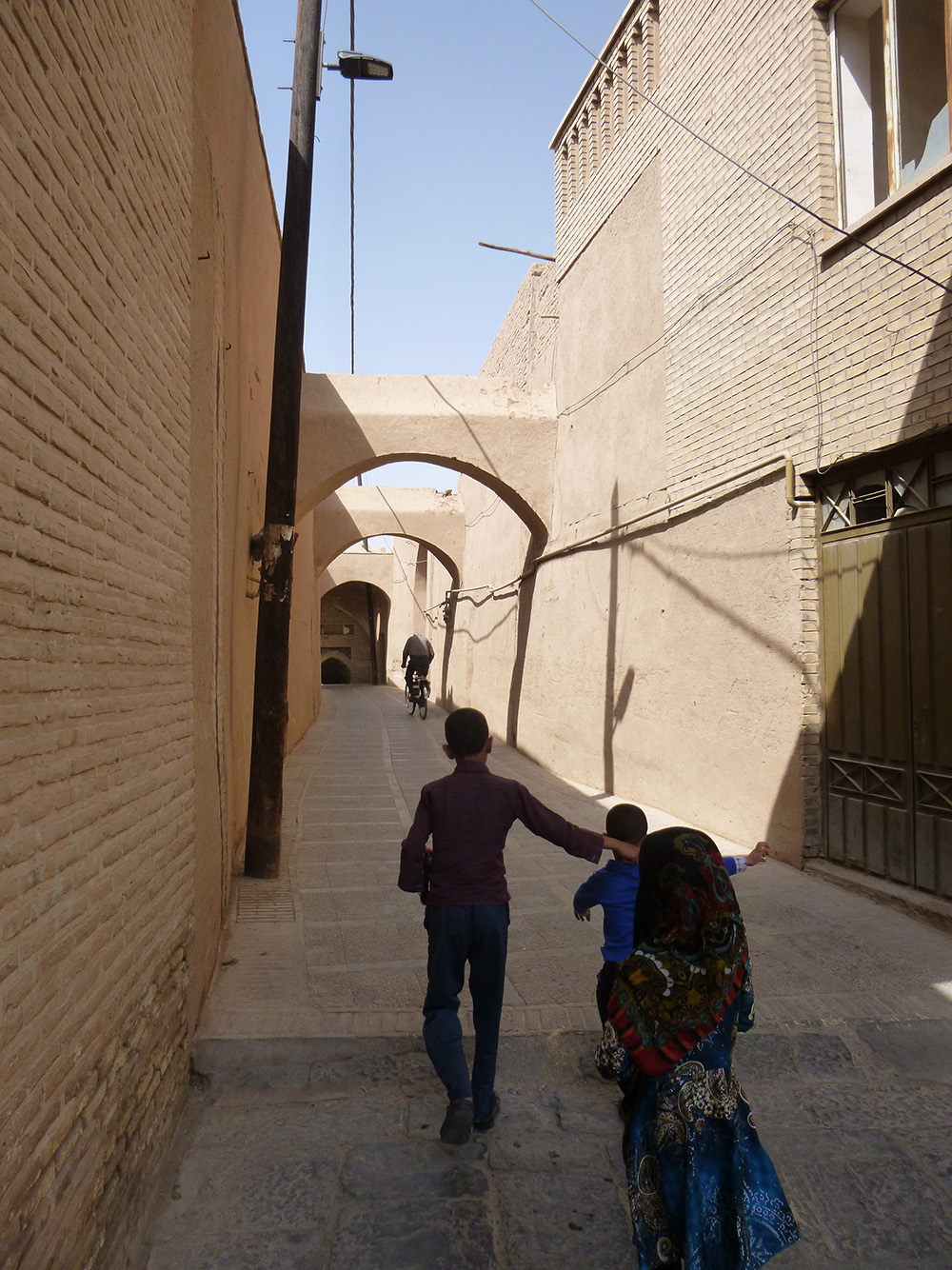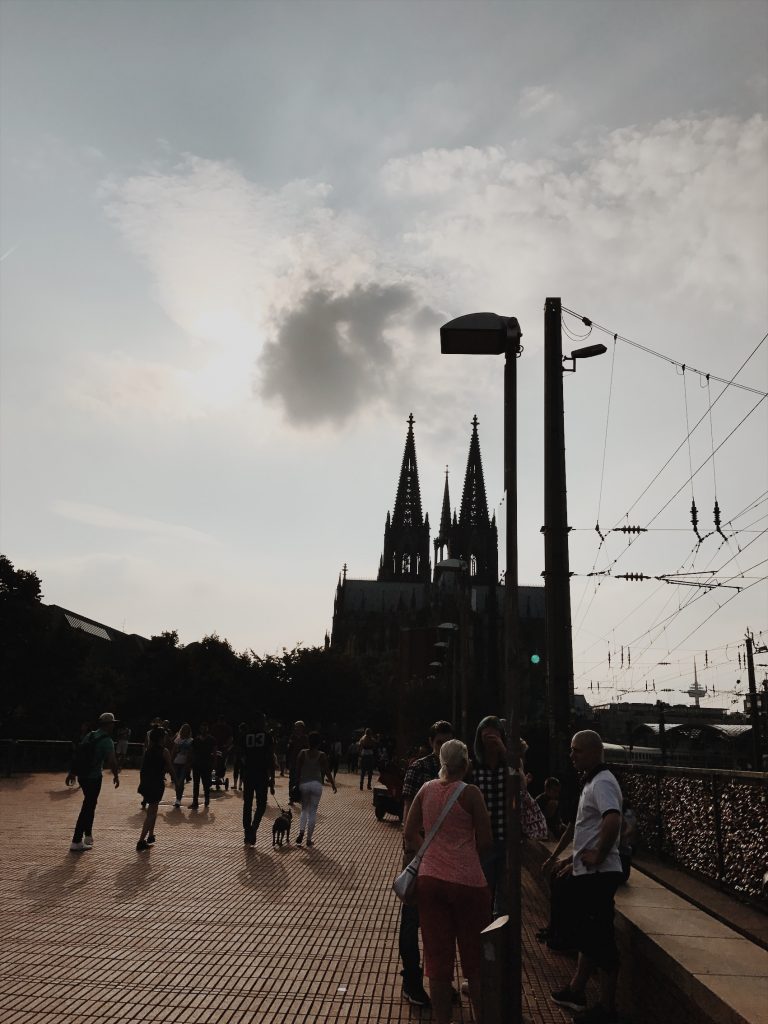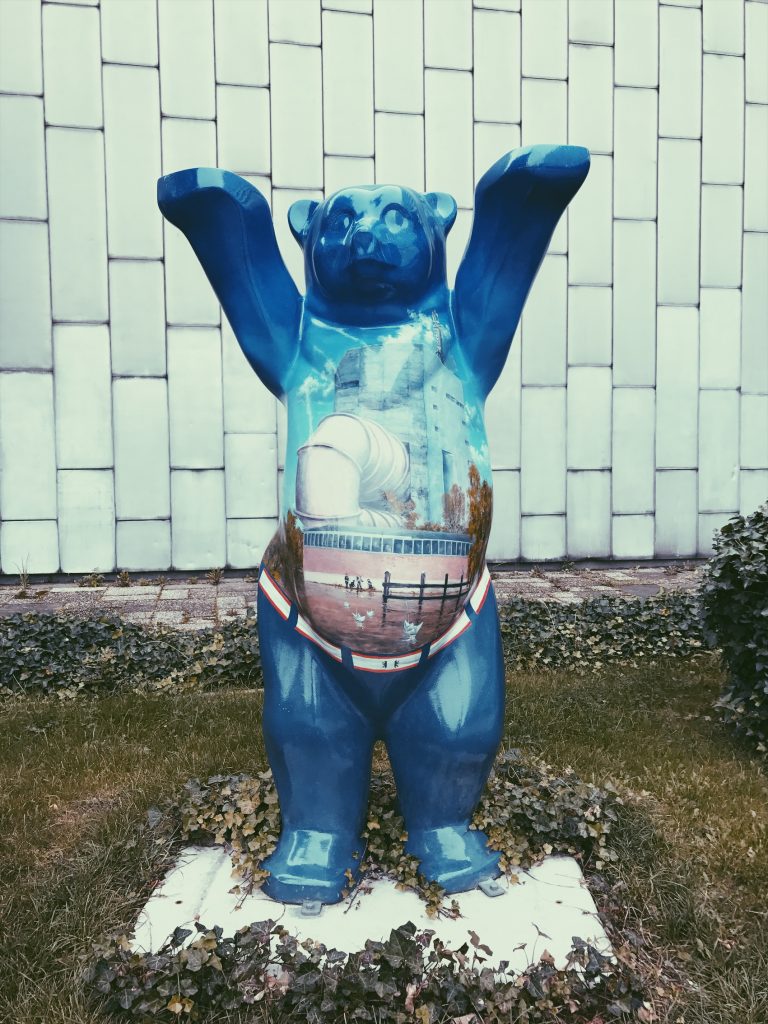Postcard from Yazd in Iran: Knowledge hub on qanats, water reservoirs, wind catchers and cloud seeding
The Iranian oasis town Yazd is known as the capital of wind catchers. Its surrounding province has around 500,000 inhabitants. The ancient city was built in around 3000 BC and has many historic clay buildings built in narrow streets and an amazing, century-old water system. In 2017, it was declared a UNESCO heritage site. UNESCO had invited me to join an expert meeting at the International Centre on Qanats and Historic Hydraulic Structures which shares a building with the National Cloud Seeding Research Centre. It was an inspiring event consisting not only of international academic contributions, but also of testimonies on environmental challenges by a number of farming and nomadic communities across Iran. Moreover, we visited the National Cloud Seeding Research Centre and took part in a one-day excursion.
[aesop_gallery id=”2260″ revealfx=”fromleft” overlay_revealfx=”fromright”]
For a location that depends on 50 mm of annual average precipitation (Germany’s annual average is 746 mm), water harvesting, as well as transport and storage of water are essential. Today, a 300 km pipeline from the City of Esfahan (with 112 mm annual precipitation) ensures a continuous water supply for households and the growing tile and textile industries. But as a local scholar put it: “In Yazd, everything is about water. We constantly think about it.”
[aesop_image imgwidth=”100%” img=”https://blog.zef.de/wp-content/uploads/2017/10/Irit_Eguavoen_mosque-1-1.jpg” credit=”The impressive Friday Mosque of Yazd has no wind towers. It is cooled by the typical blue box desert cooler suitable for arid climates.” alt=”The impressive Friday Mosque of Yazd has no wind towers. It is cooled by the typical blue box desert cooler suitable for arid climates.” align=”center” lightbox=”on” captionposition=”left” revealfx=”off” overlay_revealfx=”off”]
[aesop_image imgwidth=”100%” img=”https://blog.zef.de/wp-content/uploads/2017/10/Irit_Eguavoen_mosque-2-1.jpg” credit=”The impressive Friday Mosque of Yazd has no wind towers. It is cooled by the typical blue box desert cooler suitable for arid climates.” alt=”The impressive Friday Mosque of Yazd has no wind towers. It is cooled by the typical blue box desert cooler suitable for arid climates.” align=”center” lightbox=”on” captionposition=”left” revealfx=”off” overlay_revealfx=”off”]
Yazd even has a water museum dedicated to the ancient qanat (literally meaning “canal”) technology, which is located in the beautiful former residence of a merchant. Here, visitors can get a first-hand impression of how water supply and cooling was organized in historical Yazd.
During the meetings and excursion, we learnt a lot about the qanats in arid central parts of Iran and Pakistan, where they are called called kerezes. The Iranian expert Majid Labbaf Khaneiki told us about the historical evolution of qanats in different parts of Central Asian. They have probably been developed as a response to local climate changes occurring some 2,500 years ago. Springs, which had supplied settlements and irrigation schemes before, provided less water and people started to dug canals to get closer to the spring source. Over many generations, these underground canal systems were extended, became more complex and thus evolved into effective water harvesting tools in desert regions.
Qanat technology neglected and revitalized
Qanats are underground canals that were dug by hand over very long distances starting from mountain chains leading into the desert. They always start with a “mother well” followed by a series of shaft wells all along their way. These wells are even visible from the air (plane) and resemble small craters. Qanats brought water from distant springs but theyalso drained large areas and therewith supplied water for the settlements and irrigation schemes. The rich built their residences on top of qanats so they enjoyed direct home connection. Other strata fetched water from public water points called payab.
[aesop_image imgwidth=”100%” img=”https://blog.zef.de/wp-content/uploads/2017/10/Irit_Eguavoen_qanat-of-zarch-payab1.jpg” credit=”Climbing the steep and plenty steps to this water point of the Qanat of Zarch gave us a pretty good idea of how sporty water fetching used to be.” alt=”Climbing the steep and plenty steps to this water point of the Qanat of Zarch gave us a pretty good idea of how sporty water fetching used to be.” align=”center” lightbox=”on” captionposition=”left” revealfx=”off” overlay_revealfx=”off”]
[aesop_image imgwidth=”100%” img=”https://blog.zef.de/wp-content/uploads/2017/10/Irit_Eguavoen_qanat-of-zarch-payab-2.jpg” credit=”Climbing the steep and plenty steps to this water point of the Qanat of Zarch gave us a pretty good idea of how sporty water fetching used to be.” alt=”Climbing the steep and plenty steps to this water point of the Qanat of Zarch gave us a pretty good idea of how sporty water fetching used to be.” align=”center” lightbox=”on” captionposition=”left” revealfx=”off” overlay_revealfx=”off”]
As in Pakistan, Iran experienced a heyday of modern water engineering science too, when historic water harvesting technologies were being neglected. From the presentations I attended it became clear how politicians favored science over historical experience, for example by creating incentives for groundwater exploitation through pumping tube wells. Besides the financial support for building tube wells, the high cost and effort to maintain and clean the qanats contributed to a loss in popularity among the local populations and a turn towards tube wells in many parts of the region.
Many historic qanats and kerezes were not actively used any longer and faced devastation. But experts also outlined a recent paradigm shift towards the qanat technology: As groundwater exploitation through tube wells was limitless in quantity and cost, many aquifers became overexploited and local water tables were falling. In addition, the climate in Iran and Pakistan has become harsher again, with less precipitation and more variability. This is why qanats and kerezes have regained academic attention as possible sustainable and locally adapted technologies.
[aesop_gallery id=”2266″ revealfx=”fromleft” overlay_revealfx=”fromleft”]
The historic systems are partly revitalized and rehabilitated, at times in combination with other local water harvesting technologies, such as water harvesting dams. This is the context of the work done by the International Centre on Qanats and Historic Hydraulic Structures in Yazd which is supported by UNESCO. One mandate is to conduct research and implement qanat rehabilitation projects. The other mandate, maybe even more important, is to remind and inform the public and political decision-makers about the historical water harvesting technology and to point out why qanats are a good solution to current climate challenges in the region. In Iran, qanats are already being recognized as UNESCO cultural heritage sites. Pakistani authorities also applied for the UNESCO cultural heritage status and kerezes have been short-listed for the next decision-making rounds.
[aesop_image imgwidth=”100%” img=”https://blog.zef.de/wp-content/uploads/2017/10/Irit_Eguavoen_school-1.jpg” credit=”Environmental education starts at the school gate. Yazd is a green city in the middle of the desert with many parks and large street trees. ” alt=”Environmental education starts at the school gate. Yazd is a green city in the middle of the desert with many parks and large street trees. ” align=”center” lightbox=”on” captionposition=”left” revealfx=”off” overlay_revealfx=”off”]
[aesop_image imgwidth=”100%” img=”https://blog.zef.de/wp-content/uploads/2017/10/Irit_Eguavoen_school-2.jpg” credit=”Environmental education starts at the school gate. Yazd is a green city in the middle of the desert with many parks and large street trees. ” alt=”Environmental education starts at the school gate. Yazd is a green city in the middle of the desert with many parks and large street trees. ” align=”center” lightbox=”on” captionposition=”left” revealfx=”off” overlay_revealfx=”off”]
Further reading:
Semsar Yazdi, Ali Asghar and Majid Labbaf Khaneiki 2013. Veins of desert. A review on the technique of qanat/falaj/karez. Second edition. Shahandeh Publishers. Semsar Yazdi, Ali Asghar and Majid Labbaf Khaneiki (eds.) 2012. Qanat in its cradle. Situation of Qanat (kariz, karez, falaj) in the World. Volume I. Shahandeh Publishers. Semsar Yazdi, Ali Asghar and Majid Labbaf Khaneiki 2017. Qanat knowledge. Construction and maintenance. Springer.








Thank you Irit. This is very informative and interesting. Your eyes have lingered on everything even seemingly unimportant issues and your report is admirable. I hope your report can galvanize some students into studying more about oriental cultures.
Yes, Majid, I hope some readers feel encouraged to follow up the research you do at the centre or to suggest own projects because knowledge exchange across water scarce regions bears so much untapped potential.